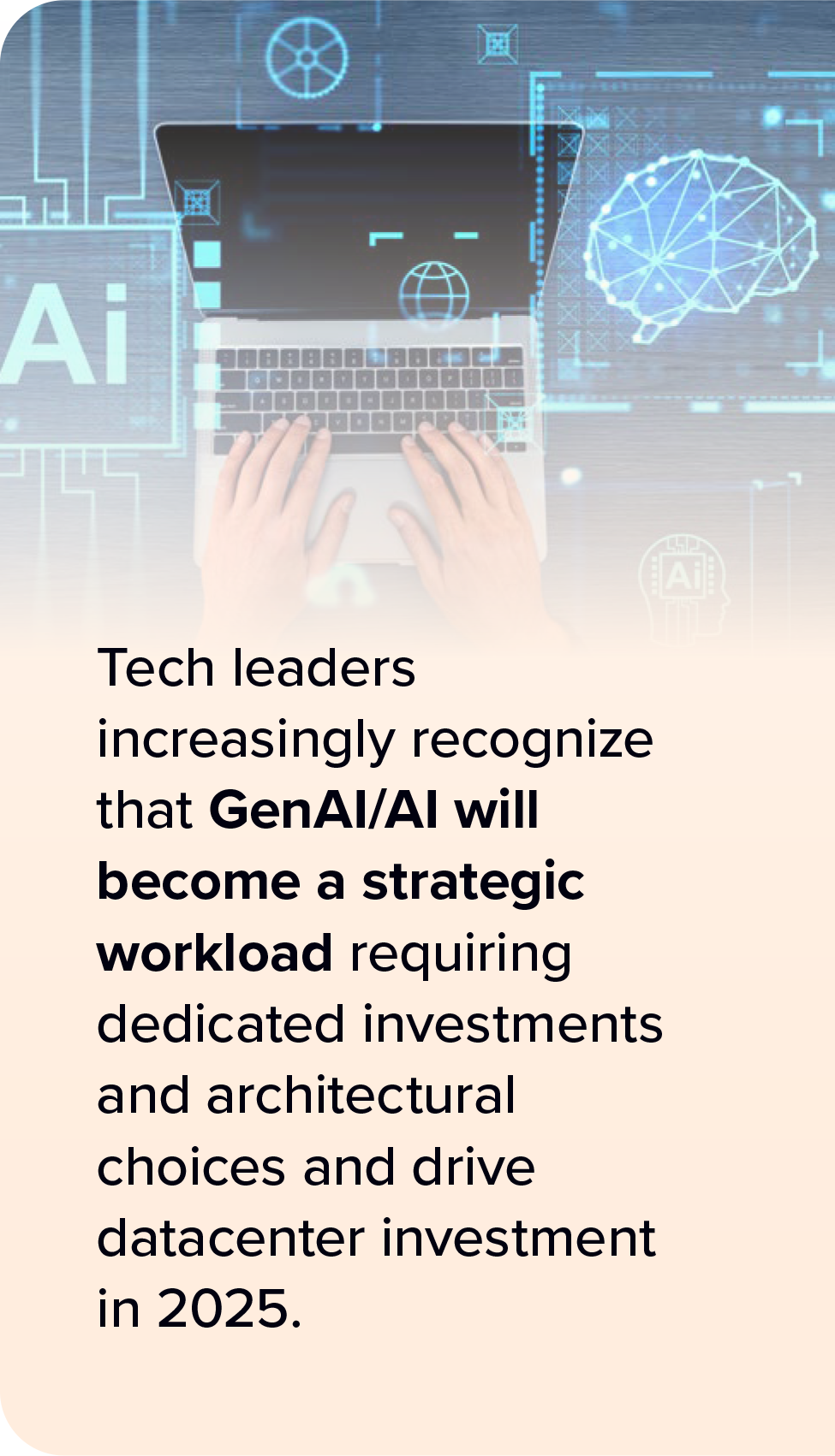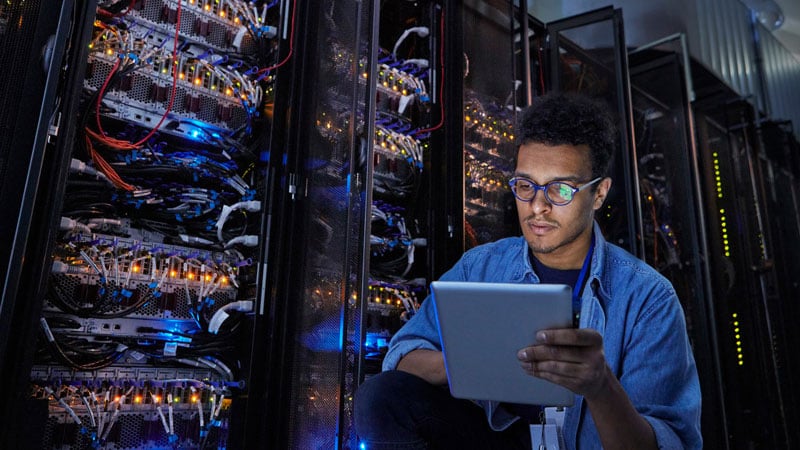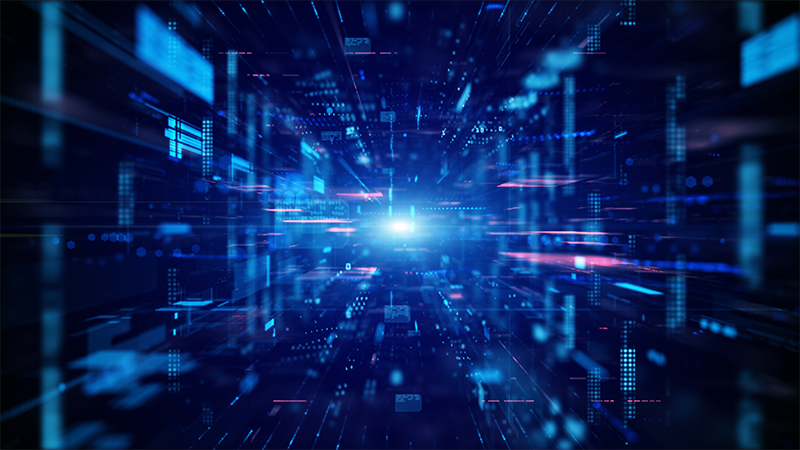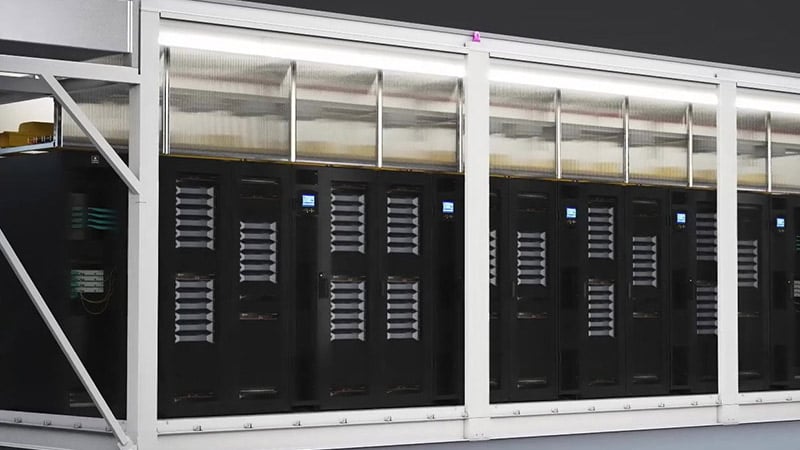Research from analyst firm IDC shows how organizations should adapt to compete and innovate.
According to recent research from IDC (supported by Vertiv), data center energy consumption is projected to grow at a compound annual rate of 23.2%, reaching 915 terawatt-hours by 2028. This surge underscores the critical need for efficient data center infrastructure to support AI's accelerated compute demands.
According to the same IDC study, 84% of technology leaders view generative AI (GenAI) as a significant new corporate workload akin to enterprise resource planning (ERP) systems. In addition to AI disrupting their businesses, organizations anticipate concerns in implementing their tech strategies. They expect to significantly increase their budgets to improve cyber resilience and see a continued increase in spending in the medium term, including:
- Inflation driving up vendor pricing
- Supply chain constraints that limit access to IT hardware
- Managing demand for cloud subscriptions, AI model building, and software
- Changes with tech provider due to potential geopolitical factors
- Skill shortages preventing the use of the technology
- Impact of recession on business revenue targets

 Figure 1. Meeting cyber recovery/resiliency objectives and modernizing their respective core applications are seen as the top drivers for increased IT spending in 2025, closely followed by edge and core data center infrastructure expansions and modernizations. Source: IDC Data Center Vision
Figure 1. Meeting cyber recovery/resiliency objectives and modernizing their respective core applications are seen as the top drivers for increased IT spending in 2025, closely followed by edge and core data center infrastructure expansions and modernizations. Source: IDC Data Center Vision
Balancing power scarcity and managing supply
One of the most pressing issues highlighted in the study is growing energy demand, outpacing new supply globally and in key markets. Aging electrical grids and geographically concentrated data centers raise concerns about the stability and reliability of the grid. This imbalance also raises concerns about power availability and permitting, as data centers require substantial energy to operate efficiently.
Strengthening fault tolerance and simplifying management are essential for improving reliability and operability in data centers. Microgrids, which are essentially highly localized power grids with energy storage capabilities, enhance grid stability and maintain uninterrupted operation for data centers by providing a reliable and independent power source. As the complexity of IT infrastructure and workloads grows, so does the need for redundant systems that can withstand failures and enable continuous operations. Implementing advanced monitoring and management tools can help data centers achieve higher reliability, reduce downtime, and streamline operations.

Innovating cooling, energy management systems
Liquid cooling is emerging as an energy-efficient method for heat dissipation in high-density computing environments. According to IDC, this technology improves cooling efficiency and supports higher power densities, making it ideal for modern data centers. The study highlights that high-density AI computing uses liquid cooling due to its superior thermal performance. For the highest power densities, hybrid cooling methods, such as rear door heat exchangers, are required.
Liquid cooling also enables the reuse of data center waste heat for other purposes, supporting sustainability and circularity. Up to 90% of heat from data centers is reusable, which can significantly reduce their carbon footprint and greenhouse gas emissions. This approach aligns with environmentally responsible business goals.
The study also emphasizes the importance of energy management systems, which control energy consumption through software, integrated sensors, and hardware. These systems enable precise monitoring and management of energy resources, leading to cost savings and improved efficiency. Power purchase agreements (PPAs), often from renewable sources, provide a reliable and environmentally responsible means to procure electricity. By leveraging PPAs, data centers can reduce their carbon emissions footprint, contribute to the community, and attain their responsible business goals.
A call-to-action for CIOs
Leveraging accelerated computing, enterprises are developing new data center strategies, implementing forward-looking technologies, and acquiring new skills to support future data centers. CIOs will play a decisive position in setting their competitive differentiators through the AI-adaptive infrastructure and anticipative frameworks for business growth.
Given that a data center's lifespan typically lasts 20 years—compared to the five-year or less IT lifecycle—and with technology advancing rapidly, staying ahead is crucial. The data center of the future should be able to support AI-fueled business growth at scale. Key drivers of IT spending in 2025 include meeting cyber recovery and resiliency objectives, modernizing core applications, and investing in data center infrastructure—all for expanding edge locations and modernizing corporate data centers.








